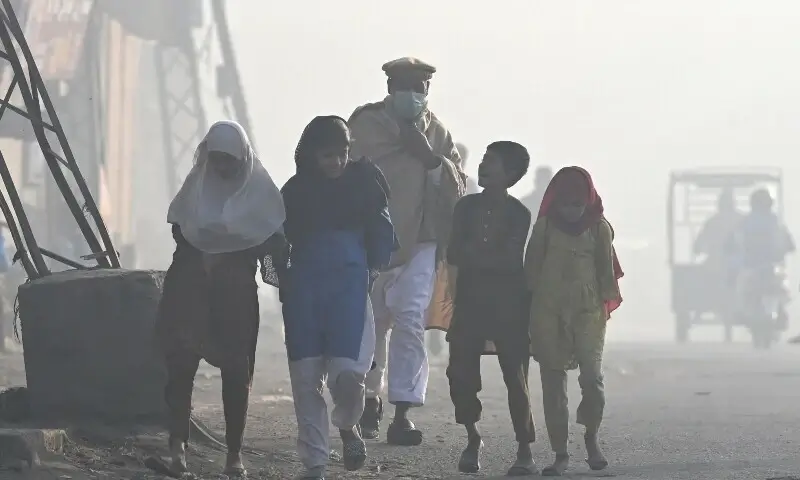Smog Air Quality Situation Drives Educational Policy
The Punjab government has announced a phased reopening of schools across the province, with significant exceptions for Lahore and Multan divisions, citing marginal improvements in air quality.
Background of Smog-Induced School Closures
On November 6, provincial authorities had initially closed public and private educational institutions across 18 districts due to severe smog conditions. The situation was dramatically declared a “calamity” last month, prompting widespread educational disruptions.
Partial School Reopening amid Smog Challenges
A notification from the Punjab Environmental Protection Agency (EPA) revealed that schools in most Punjab districts will reopen on November 19 (Tuesday). However, Lahore and Multan divisions remain under continued closure.
Strict Operational Guidelines for Smog Protection
The EPA mandated several critical restrictions for reopening schools:
- Mandatory face mask usage for all students and staff
- Delayed school opening times (after 8:45am)
- Complete ban on outdoor sports and extracurricular activities
- Implementation of staggered class closing times to minimize traffic congestion
Smog-Related Air Quality Assessment
Lahore’s Air Quality Index (AQI) showed a notable improvement, dropping from the “hazardous” category for the first time in 12 days. The current AQI stands at 253, which remains harmful to public health.
Factors Contributing to Smog Air Quality Improvement
The EPA attributed the slight air quality enhancement to:
- North-western wind patterns
- Reduction in crop burning activities
- Administrative interventions to mitigate smog
Health Recommendations for Smog Conditions
Despite the marginal improvement, the EPA strongly recommended citizens:
- Wear N-95 masks when outdoors
- Avoid excessive outdoor activities
- Ensure vehicle fitness to reduce emission contributions
Rawalpindi Division Response to Smog Challenges
The EPA also ordered schools in Rawalpindi division—including Rawalpindi, Attock, Jhelum, and Chakwal districts—to resume physical classes from Tuesday.
Ongoing Smog Monitoring
The provincial government continues to closely monitor air quality conditions, signaling potential future adjustments to educational policies based on environmental developments.
Conclusion: Navigating Smog-Induced Educational Disruptions
While the partial school reopening offers some relief to students and parents, health authorities emphasize continued caution and adherence to safety guidelines amid persistent smog challenges.
The decision reflects the delicate balance between educational continuity and public health protection in the face of severe environmental conditions.

